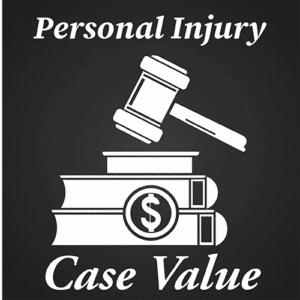Understanding the Value of Personal Injury Cases in California
How to Value A Personal Injury Case In California

Personal Injury Case Value
When it comes to personal injury cases resulting from collisions, understanding the value of your case is crucial. In California, the value of a case primarily hinges on the damages that result from the negligence of the responsible party. Here's a detailed breakdown of how fault and damages are assessed, and what factors can influence the outcome of your case.
Assessing Fault For Personal Injury Case Value
In California, each party involved in a collision is assigned a percentage of fault. This means that if multiple parties are involved, the jury will determine the degree to which each party's negligence contributed to the accident. This could result in various fault distributions such as 50/50 or 75/25. The total damages assessed are then adjusted based on these percentages. However, in your case, it appears the defendant is 100% at fault, meaning your potential damages won't be reduced by any fault attributed to you.
Types of Damages
The damages in a personal injury case can be broadly categorized into:
- Medical Bills: This includes all medical care reasonably necessary to treat your injuries from the collision.
- Future Medical Bills: Anticipated costs for ongoing medical treatment.
- Lost Earnings: Compensation for income lost due to missed work because of your injuries.
- Lost Earning Capacity: Compensation for any future loss of income due to the lasting impact of your injuries.
- Pain and Suffering: Non-economic damages for the physical pain and emotional distress endured.
Impact of Injury Severity on Damages
The severity of your injuries significantly impacts the damages. Severe injuries often require extensive medical treatment, leading to higher medical bills and more time off work. This, in turn, increases the compensation for pain and suffering. For instance, a person requiring surgery after a collision will likely have higher medical bills, miss more work, and endure greater pain and suffering compared to someone with minor injuries. If your injuries persist, requiring ongoing treatment, this prolongs your suffering and adds to your medical expenses and lost earnings.
Correlation Between Collision Size and Damages
While one might assume that a larger collision always results in greater damages, this isn't always the case. There are instances where individuals walk away from massive collisions unscathed, resulting in minimal damages. Conversely, even minor collisions can sometimes lead to severe injuries and substantial damages. Therefore, the size of the collision is not a definitive indicator of the damages that will be awarded.
Emotional Distress Personal Injury Case Value
In addition to physical injuries, emotional distress is a critical component of damages. Emotional distress refers to the psychological impact of the collision. Given the severity of your collision, the psychological trauma you are experiencing and the need for psychological treatment can significantly increase the damages. This includes additional medical bills and serves as further evidence to the jury of the lasting impact of the collision.
Previous Collisions Personal Injury Case Value
The fact that you recently had another collision where you sought treatment for similar injuries can be a double-edged sword. The defense might argue that your injuries predated the current collision. However, given the severity of your recent collision, it's likely that the jury will be sympathetic to your need for ongoing treatment. Opting for more invasive treatments such as pain management could also influence the jury's perception of your suffering.
Treatment Choices
The type of medical treatment you choose also affects the case value. More invasive treatments like Epidural injections often have a greater impact on the jury compared to less invasive treatments like chiropractic care. This is because invasive treatments tend to generate higher medical bills and more vividly demonstrate the extent of your pain and suffering.
Insurance Adjusters vs. Jury Perception
It's important to note that insurance adjusters and jurors evaluate cases differently. Adjusters focus mainly on the tangible costs, like medical bills and lost earnings, often plugging these numbers into a computer to determine the payout. High medical damages typically result in higher settlements without needing to go to trial. Jurors, on the other hand, can be swayed by the emotional aspects of your suffering and the visual impact of your injuries and treatments.
Case Value Estimate
Based on your current treatment, if you only undergo chiropractic care, your case might be valued at around $15,000 or less. However, seeking therapy for emotional distress could add another $10,000 in the eyes of the adjuster. Therefore, the total value of your case could be significantly higher if you opt for more comprehensive and invasive treatments that clearly demonstrate the severity of your injuries and suffering.
Conclusion For Injured Californians Navigating Personal Injury Case Value
Understanding the various factors that influence the value of your personal injury case is essential for navigating the legal process in California. The degree of fault, the severity of injuries, the type of medical treatment, and the psychological impact all play critical roles in determining the final compensation. By thoroughly documenting your injuries and treatment, and understanding the perspectives of both insurance adjusters and jurors, you can better advocate for the full value of your damages.
- A Guide on Red Light Auto Accidents in California - August 14, 2024
- Self-Representing in a California Personal Injury Claim - August 13, 2024
- Common Sources of Distraction for Drivers in California - August 13, 2024
